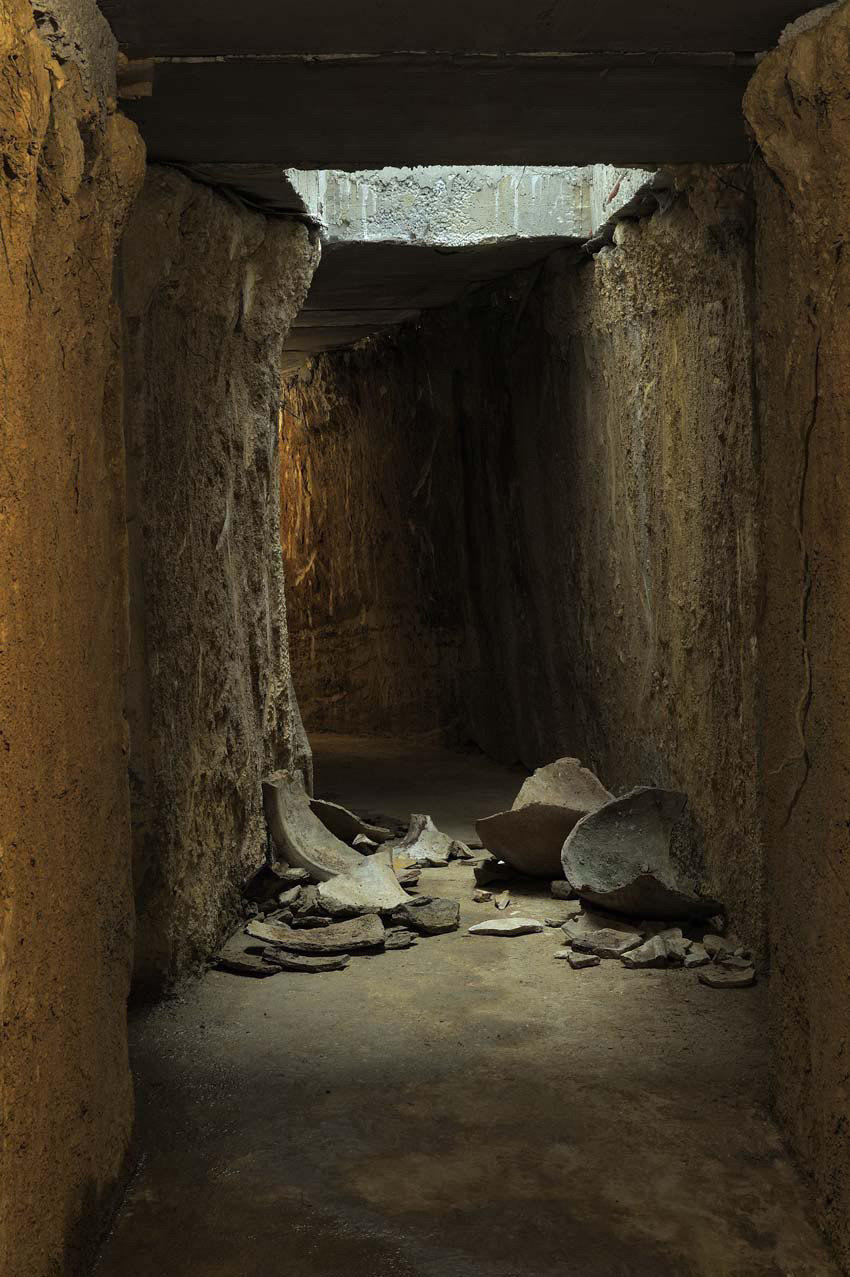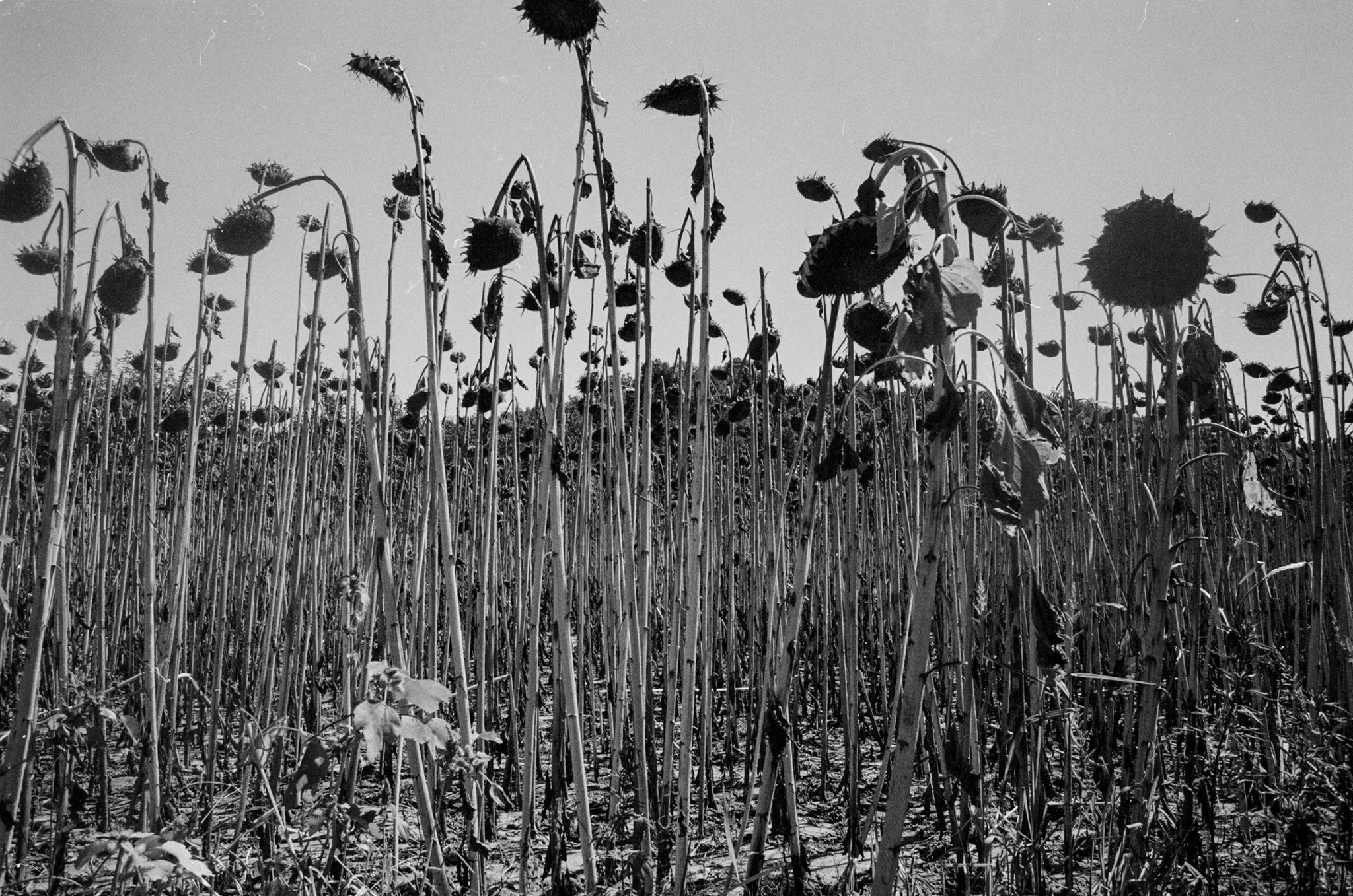Excerpt from
Anselm Kiefer at the Collège de France – Art Will Survive Its Ruins,
Éditions du Regard, Paris, 2011, p. 328-337.
(…)
I moved to Barjac in 1992. (…) In the early days when I settled here, everything I produced on this site was drawn from materials I had brought with me from Germany: photographs, books, unfinished paintings, even bits of lead from the roof of the Cologne Cathedral. (…) I began constructing with an energy that I imagine was proportional to my desire to take possession of this place. I built roads and buildings, planted trees and vegetation, laid out enclosures. And then one day the idea of making tunnels came to me. As there was nothing to see on the surface here, I went underground. In fact, it was not an idea but a reflex.
(…)
After completing my initial tunnel, the thought of the Seven Heavenly Palaces of the Jewish mystics sprang to my mind and I set my goal on erecting seven buildings and constructing greenhouses connected by tunnels. This was a way of materializing the philosophy of the Markavah in the Sepher Hekhalot, the book that relates man’s ascent through the Seven Heavenly Palaces. In the course of his journey, his hands gradually burn away, followed by his arms and the rest of his body, until the moment when, having attained the last place, his spirit alone remains. And as his spirit ascends ever further, he descends deeper and deeper, effectively plunging into his own being. And so, having wandered underground in darkness for a time, you will come to a stairway that will lead to a room flooded with light where, across from you, another stairway will take you to another tunnel, and so on, seven times in succession.
(…)
I have often compared my studios to laboratories. But one can also picture them as refineries or mines. Industrial sites confront us with a tangle of pipes and ducts connecting different elements in a constant to-and-fro of currents whose purpose escapes the onlooker. You are about to proceed through underground passageways and their ramifications, where you will run the risk of getting lost. But is it not the case that when one loses one’s way one gains a wider view of the world?
Here and there stairways will allow you to glimpse daylight and go back underground to wander off in another direction. In other places you will come across openings provided by houses, where you will be able to look up or down and where the works you see – bookcases, paintings, books and sculptures – are just sufficiently lit for you to be aware of their presence and simultaneously the dialectical relationship between the object and its abstraction.
Barjac is not only a site, an exhibition venue, a work space, a laboratory; its ground also has supplied a substantial proportion of the materials I have used in my work. For example, the sunflowers that grow up to seven meters tall, whose seeds were imported from Japan and planted in Barjac, can be seen in a number of my works from 1996 to 2012. Likewise, thousands of tulips were planted one autumn and, after lying dormant in the earth all winter, they burgeoned in the spring, flowered and perished after singly confiding their secrets to the stars. I used their dried, conserved petals to make paintings devoted to Arab Poets.
(…)
Some of the buildings you will come across contain and/or display artworks; each of which requires its own exhibition space to make its full impact. Being shown in the wrong environment might in certain cases temporarily obliterate some of these works. The nature of these buildings requires the viewer to cross a threshold in both the literal and the figurative sense, as a transition to approaching a work. The purpose of the houses is to provide access to the artworks within an ideal context. In absolute terms, I would prefer to propose the houses complete with their contents. One such house stands across from the festival palace in Salzburg; others are found in and among other countries including Italy, Argentina, New Zealand and the United States. Still others form an integral part of the overall work on this site. On the eastern side of the estate, for example, you will enter greenhouses that are one with the objects they contain.
Consider Sternenfall (Falling Stars), a collapsed tower – I allowed it to collapse at my show at the Grand Palais in 2007: the glass walls provide a framework that dissociates the ruins from the environment and confers on them a special significance. The glass panes constitute a semi-permeable skin, so to speak, linking art to the world outside in a kind of dialectical relationship. There is in fact a tangible boundary between art and life, an unstable border that often shifts from one to the other–a frontier without which art cannot exist. When, within the context of its inception, art borrows elements from life the traces of which remain visible in the finished work, the difference between art and life defines the very essence of the artwork.
The more pressingly the artwork confronts the boundary between art and life, the more interesting it grows. The glass skin of the greenhouses is such a frontier; the object of a tug of war. The greenhouses were built to catch and concentrate the sun’s warm beams in winter and to keep them from escaping back into the cosmos. Their semi-permeability directs the cosmic energy emanating from the sun, and in this sense, it is also a metaphor for art.
The point of departure for the reinforced concrete sculptures in Barjac was a discovery I made on the occasion of my first show in New York in 1981. I was confronted by the vestiges of the West Side Highway along the Hudson River, several miles of which had been destroyed by explosives. The blocks of concrete from the former roadway, bristling with twisted and rusted steel rods like severed synapses or the tentacles of giant polyps, fascinated me. These steel rods embodied a likeness to earthworms, writhing back into the darkness of the ground. For twenty-five years a large quantity of analogies occurred to me and in the early 1990s, I finally hit upon a way of expressing the tremendous shock that I had experienced on the banks of the Hudson. But what you will see in Barjac is only a provisional result, an interim attempt to express this experience.
(…)
I shall not detail the buildings and installations, which you will see on your own, for you will find it more interesting to explore them unimpeded by any preconceived notions or commentary. I shall only add that everything you see in Barjac is part of an ensemble whose elements are connected: completing each other in one spot, clashing into one another, or drawing apart to come together again more effectively still elsewhere. These elements branch out and form networks, not only owing to the footbridges and tunnels, but also because of their internal relations. I invite you to discover La Ribaute with no preconceptions. (…)




